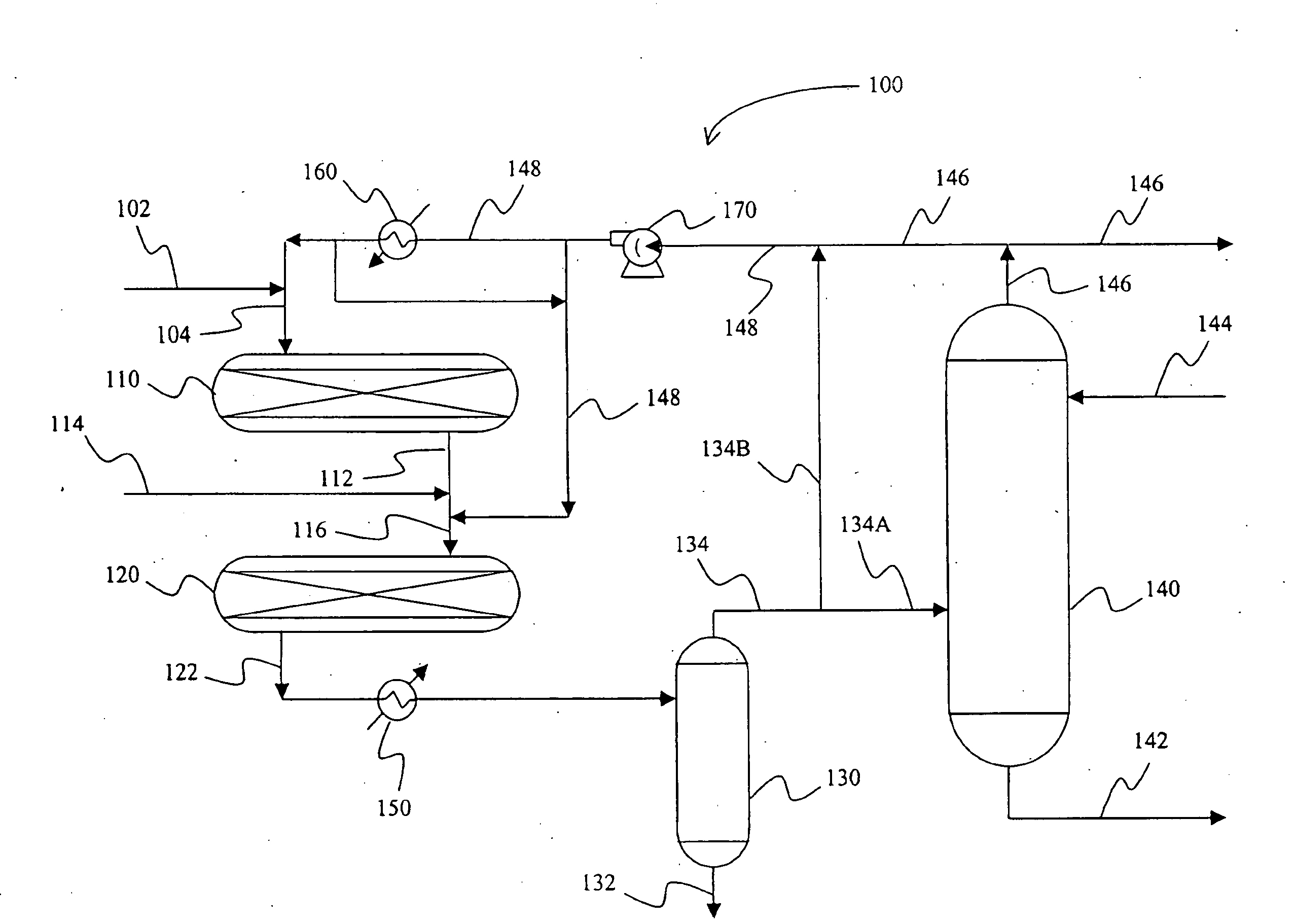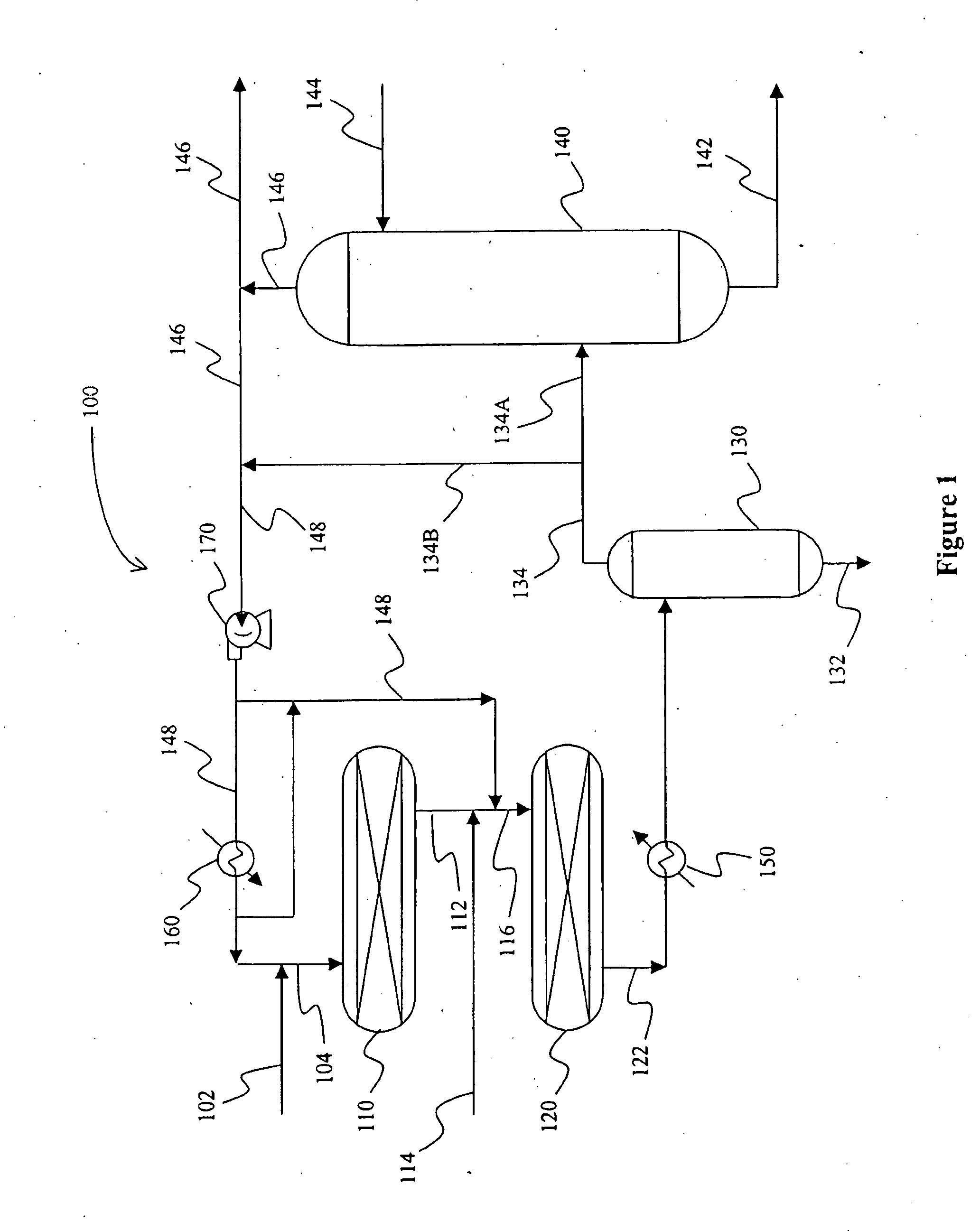Configurations and Methods for Effluent Gas Treatment
a technology of effluent gas and configuration, applied in the direction of sulfur preparation/purification, separation processes, soldering apparatuses, etc., can solve the problems of relative high stripping steam requirement, economic disadvantage, and several difficulties, and achieve the effect of reducing oxygen depletion
- Summary
- Abstract
- Description
- Claims
- Application Information
AI Technical Summary
Benefits of technology
Problems solved by technology
Method used
Image
Examples
Embodiment Construction
[0016]The inventors have discovered that sulfur dioxide can be removed from oxygen-containing effluent gases in a highly efficient manner without the need of a high-temperature operation (e.g., as used in direct firing). In especially preferred aspects, the temperatures for oxygen and sulfur removal are typically below 600° F.-900° F., and both oxygen and sulfur dioxide are removed in separate catalytic reactions using hydrogen sulfide and hydrogen, respectively.
[0017]In one particularly preferred aspect, as depicted in FIG. 1, a plant includes a desulfuration unit 100 having a first catalytic reactor 110 that is fluidly coupled to a second catalytic reactor 120. The effluent of the second catalytic reactor 120 is separated in separator. 130, which provides a gas stream to absorber 140.
[0018]Most typically, a waste gas 102 containing oxygen and sulfur dioxide at a temperature of, or preheated to a temperature of about 400° F.-600° F. is mixed with the hydrogen sulfide-containing rec...
PUM
| Property | Measurement | Unit |
|---|---|---|
| Temperature | aaaaa | aaaaa |
| Temperature | aaaaa | aaaaa |
| Digital information | aaaaa | aaaaa |
Abstract
Description
Claims
Application Information
 Login to View More
Login to View More - Generate Ideas
- Intellectual Property
- Life Sciences
- Materials
- Tech Scout
- Unparalleled Data Quality
- Higher Quality Content
- 60% Fewer Hallucinations
Browse by: Latest US Patents, China's latest patents, Technical Efficacy Thesaurus, Application Domain, Technology Topic, Popular Technical Reports.
© 2025 PatSnap. All rights reserved.Legal|Privacy policy|Modern Slavery Act Transparency Statement|Sitemap|About US| Contact US: help@patsnap.com


